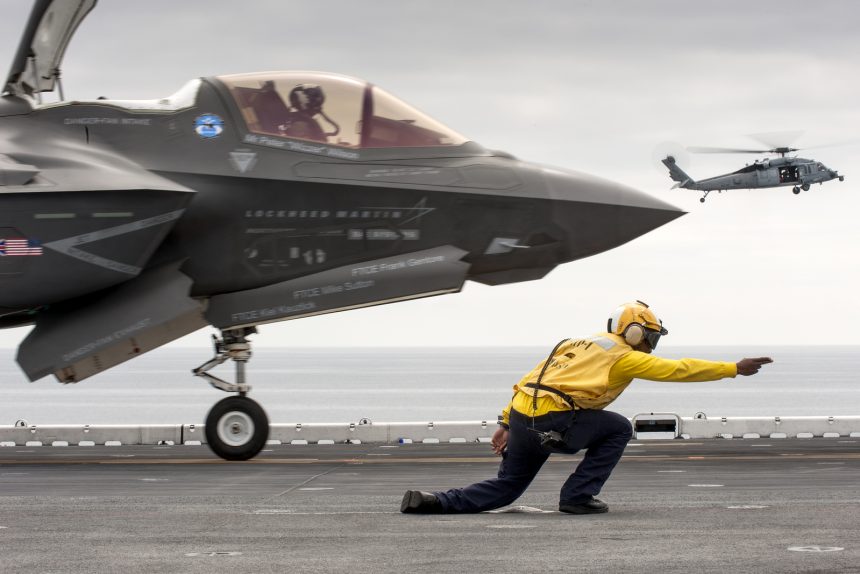Beginning in 2018, according to the current schedule, the F-35B, the STOVL (Short Take Off Vertical Landing) version of the Lockheed Martin’s Joint Strike Fighter, will operate from Royal Navy’s Queen Elizabeth aircraft carriers.
Whereas pilots and ground crews are working alongside their U.S. Marine Corps counterparts at Eglin Air Force Base, in Florida, a UK pilot, Sqn Ldr Jim Schofield, performed the first UK takeoff of an F-35B at sea on USS Wasp.
As part of the testing campaign aimed at expanding the plane’s flight envelope, the F-35B conducted vertical night landings on USS Wasp off the Florida coast.
Noteworthy, the pilot explains how easy to fly is the STOVL JSF, compared to the legendary Harrier Jump Jet.

















